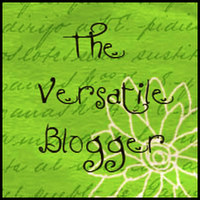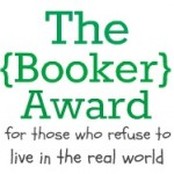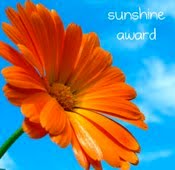If you like this blog you can have links to each week's posts delivered to your e-mail address. Please click here.
|
This is a rare and difficult form of art due to the raw material and the effort involved in molding it. Each of those dots is a sheep! ***
If you like this blog you can have links to each week's posts delivered to your e-mail address. Please click here.
6 Comments
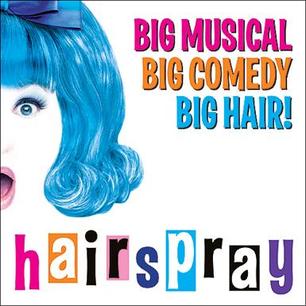 I recently had the great pleasure of attending a stage concert production of the musical Hairspray in honor of the 25th anniversary of the cult classic movie on which the musical is based. The music was performed by the Baltimore Symphony Orchestra and John Waters, author of the film and the musical, served as narrator. In between the musical numbers Waters recounted tales of his experiences growing up in the segregated city of Baltimore in the sixties, including the racial tensions which served as inspiration for the storyline. Just before the climax of Hairspray where the Corny Collins Show becomes open both to whites and blacks alike, Waters said that this event was inspired by what had happened at a real show in Baltimore called the Buddy Deane Show. A daring group of black and white youths crashed one of the white-only dancing days and succeeded in briefly integrating the show, but sadly as a result of this it was taken off the air. However, Waters then added that this was a movie and who needed reality anyway? So he had proceeded to write the happy ending that never happened. Water’s story got me thinking about why we write fiction. The fiction of the type portrayed in Hairspray is aspirational. It allows us to imagine a better future when we are stuck in seemingly hopeless situations. Sometimes in this “vale of tears” the only thing that keeps us going is our dreams. At other times fiction is used to communicate teachings or experiences intended to inspire. My book The Sun Zebra is this type of fiction. It is not real in the sense that the right things always happen at the right time, in the right way, and for the right reasons. We know reality seldom works like this, but we use approaches like these to get the point across to the reader. Fiction also allows us to stir “stir things up.” It allows us to introduce chaos into our otherwise orderly world and then explore how people react to it and analyze the consequences. In my next book of short stories, entitled Spirit Women, half of the stories involve the supernatural. Do I believe in the supernatural? No, but I use it as a tool to support the themes of the stories. Finally, fiction is used for entertainment. I believe this is because many people are all too well acquainted with the tedium of their predictable everyday lives and they want to experience something different. Reality is often boring and life would be so much more interesting if we could fly through the air, open portals to different dimensions, conjure spirits, or battle monsters. Being unable to experience these things in the real world we seek to experience them in the imaginary realms of books, movies, or games. Regardless of the reason we write it, what fiction with no doubt has is the power to endure. When time has gone by and reality has been forgotten, it is the fiction that is remembered. Nowadays hardly anyone remembers the Buddy Deane Show and the unsuccessful attempt at desegregating it. But for the past 25 years a courageous group of white and black teenagers has battled the forces of obscurantism and triumphed thousands of times successfully desegregating the Corny Collins Show at each performance of Hairspray. You may ask: why is this? The answer is: Cause you can’t stop The motion of the ocean Or the rain from above You can try to stop the paradise We're dreaming of But you cannot stop the rhythm Of two hearts in love to stay Cause you can’t stop the beat! Photo credit: FatherDalton / Foter.com / CC BY-NC-SA *** If you like this blog you can have links to each week's posts delivered to your e-mail address. Please click here. Even when a writer has determined the likely target audience for their book, they sometimes have problems figuring out where that target audience hangs out. Let me share a promotion tip with you that may help you figure this out. Alexa is a search engine that can help writers locate those websites most frequently visited by their target audience. For example, let’s suppose you have written a book with a subject matter that will be mostly of interest to women 50 years or older. Then you hear about this very popular site called Wattpad that connects readers with writers all over the world. Should you spend your time promoting your book on Wattpad? If you copy the URL for Wattpad and paste it into the search box at the top of the Alexa page and click “search,” Alexa will give you an analysis of this site. On the page you will find these options: Traffic Stats, Search Analytics, Audience, Contact Info, Reviews, Related Links, and Clickstream. Click on the tab that says “Audience.” Alexa will display a page that will break down the audience that visits Wattpad using several parameters. You can see that Wattpad is mostly frequented by women. However, among the visitors the 18-24 years old range is overrepresented with respect to the general population. So Wattpad may not be the ideal place to promote this book. But let’s repeat the above process for another site called LibraryThing. Here we see that among the group of people that visit this website, women in the 45 to 65 year old group is overrepresented compared to the general population. Therefore this may be a more logical site to promote the book.
Alexa also gives you additional information such as the popularity of the website (global traffic rank), the rank in the U.S. and the site’s reputation (the number of sites linking to the website). If you are willing to install the free Alexa tool bar in your computer you can get access to even more information like the ethnicity and income of the population visiting a site. Please note that the above is a rather simplistic analysis and there are several other things to take into account before you decide to devote your valuable time to promoting your book on a website, but Alexa may be a good starting point that will help you optimize your efforts. Go to the Alexa site and play around with it a little analyzing several websites that you are using or plan to use for promotion of your book, and leave a comment here and let us know of your results or any questions you may have. *** If you like this blog you can have links to each week's posts delivered to your e-mail address. Please click here. I just learned an interesting factoid that I want to share with you. The image below is a picture of the tallest mountain in the world. Do you know which is it? If you answered Mount Everest you are correct. This mountain is over 29,000 feet high and has a lot of name recognition in the world. But let me ask the above question in a different way. When measured from the center of the Earth, which is the tallest mountain in the world? Or alternatively, the summit of which mountain is closer to outer space? Surprisingly the answer is not “Everest” but rather the mountain in the picture below. Do you know its name? This is a volcano in Ecuador called Chimborazo and it is 20,564 feet tall when measured from sea level. However, when measured from the center of the Earth, Chimborazo is 1.35 miles taller than Everest and therefore also closer to outer space! In fact, when measured in this manner, Everest is the fifth highest mountain in the world with the second, third, and fourth positions occupied by the mountains Huascaran in Peru, Cotopaxi also in Ecuador, and Kilimanjaro in Tanzania, respectively.
The reason for this surprising fact is that the Earth is not a perfect sphere. Due to the Earth’s rotation, the land and the sea around the equator bulge outward. Someone standing at sea level on the Earth’s poles is about 13 miles closer to the center of the Earth than someone standing at sea level on the equator. Because Chimborazo is located 1 degree south of the equator it sits on top of this bulge, whereas Everest which is 28 degrees north of the equator is not “pushed up” as much. When I learned about this my first thought was: what about the Death Zone? The Death Zone is found in high mountains above an elevation of 26,000 feet. At this altitude the abundance of oxygen is only 1/3 of that found at sea level and the human body is incapable of adapting effectively. The death zone is one of the reasons Everest is so hard to climb and also why the route to the top in this area of the mountain is littered with the bodies of dead climbers. I reasoned that if Chimborazo is closer to outer space than Everest, then it should also have a death zone. As it turns out this is not the case because the Earth’s atmosphere also bulges out around the equator. As a result of this, the summit of Chimborazo is safely below the death zone and the human body can function in the thin atmosphere of the summit if allowed the time for adaptation to high altitudes. So there you have it. Now next time someone says that Everest is the tallest mountain, you can impress everyone by saying, “Wait a minute…” and proceed to set the record straight. Remember to reference this blog as your source. Thanks! Everest photo credit: Rupert Taylor-Price / Foter.com / CC BY Chimborazo photo credit: apgwhite / Foter.com / CC BY-NC-ND *** If you like this blog you can have links to each week's posts delivered to your e-mail address. Please click here. Kurt Vonnegut gives some advice on how to write a short story. I have been tagged by poet extraordinaire Adrienne Joyce for the “Next Big Thing”. Adrienne has recently published a quartet of poems called “Live, Love, Hate,” which I have reviewed in the Eclectic Life Blog. She also runs her blog Sweepy Jean Explores the (Webby) World and the Third Sunday Blog Carnival, where writers can publish their past blogs and gain more exposure. I want to thank Adrienne for this chance to talk about my “Next Big Thing” and I encourage you to visit her social media sites.
Now I am supposed to answer the following 10 questions about my next big thing. Here we go: 1) What is the working title of your current/next book? The tittle of my next book is “Spirit Women.” 2) Where did you get the idea for that book? The book is a collection of short stories that I grouped together under a common theme. They all involve an interaction between a man and a woman within a paranormal or psychological context. The ideas for the stories came from several mundane sources: a museum, a song, a bridge, a book, etc. 3) What’s the genre of the book? I guess ghost stories or paranormal comes close, although a few of the stories are about reality coming apart at the seams with no supernatural entities being involved. 4) If you could pick actors to play the lead characters in your story, who would you pick? This is a hard question because it is a collection of short stories. I guess they could be presented in a Twilight Zone format. But this means that it is unlikely that any big name actors would want to be in these small productions. So this would be a chance for unknown actors to begin their career and leave their mark. 5) How would you describe your book in one sentence (10 words or less)? What do Spirit Women want? 6) (a) How will your book be published, submitted through the traditional route to a traditional publisher or will you be handling it yourself through Indie Publishing methods? (b) If you’re an Indie Author, will you be publishing through your own Indie Publishing company or in a collective with other Indie Authors? I will be self-publishing it on my own. 7) How long did it take you to write the first draft of this book? I am a slow reader/writer and it takes me forever to write and edit my stories. This book has been about a year in the making. I need to speed things up! 8) What other books within your genre are similar to yours? Any collection of short ghost/psychological stories would be similar. 9) Who or what inspired you to write this book? The voices inside my head. 10) What about your book will pique the reader’s interest? I like writing stories with a twist and looking at things at an angle. When I read a story I want to be amazed. If I don’t amaze myself when I write the story, I know I won’t amaze my readers. All the stories in this collection amazed me, and I hope they will amaze you too! *** If you like this blog you can have links to each week's posts delivered to your e-mail address. Please click here.  I wrote a post where I passed on to new authors the advice that the best way to begin writing is not to go for a novel, but rather to write short stories. Although I still believe this is sound advice, my experience selling my book of short stories The Sun Zebra and that of other authors requires that I bring up an important caveat to this advice that I briefly mentioned before. There is a bias against short stories. This bias has existed for a long time in the traditional publishing industry where the preferred work, especially for new authors, is the novel. You would guess that in the self-publishing world that would not be the case, but this unfortunately is not true. Many blogs and websites that feature books do not even have a category for short stories, and a few even state that they don’t feature short stories. Others don’t state it outright but clarify that they will not feature works under 50,000 words or so (which also excludes novellas). Some of this bias may come from the misguided notion that short stories are for beginning writers, whereas “real writers” are the ones who write novels. This is of course hogwash. Even though some writers do consider short stories to be a stepping stone for greater work, many of the greatest writers of all time have regarded the short story as a bona fide art form of its own. Among these you find Edgar Allen Poe, F. Scott Fitzgerald, John Updike, O. Henry, Stephen King, Ray Bradbury, Isaac Asimov, Washington Irving, H. P. Lovecraft, and many others. However, this notion still persists nowadays. The other reason for the bias is probably rooted in reader behavior. Readers may just feel better about becoming involved with a certain set of characters over the expanse of a longer work instead of having to repeat the process every 5,000 words or so as they would have to do with a diverse group of short stories. Readers also may crave the level of plot development and character definition that is only possible within the context of longer works. Therefore, as a new author, you will have a harder time selling short stories compared to novels. Also if the collection does not include a lot of stories you will probably sell them for a price below $2.99, which is the limit of the 70% royalty for Amazon (anything below that is 35% royalty). This will make it harder to recoup your investment on the book and on promotion. But even given the above caveat, I think that there is something that must be understood. Many stories are better told as short stories, or novellas, instead of as novels. I believe that if you find yourself asking “How can I add new characters, or more description, and other filler material to beef this story up to the 50,000 word mark of a novel?” you are going down the wrong track. Writing a novel is not like inflating a balloon. Unless you are a gifted writer or have tapped into a crowd of readers who don’t care, filler material is going to stick out like a sore thumb and your otherwise great short story or novella will be ruined by long, boring, senseless passages and/or superfluous characters. What do you think? Photo credit: Gflores / Foter / Public Domain Mark 1.0 *** If you like this blog you can have links to each week's posts delivered to your e-mail address. Please click here. 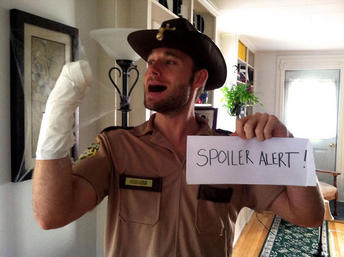 Any author whose book accumulates a significant number of reads will find that a section entitled “Shared Notes & Highlights” appears on their book’s Amazon page. As I have posted before, Amazon collects a substantial amount of information regarding the reading habits of e-book readers. Among this information is which passages most readers highlighted in the book they read. Nowadays if you buy an e-book that has many reads, this information appears in your Kindle (although you can turn it off). You can see which passages where highlighted by readers before you and how many readers did this. I guess many people will consider this a cool feature. But Amazon has gone one step further. It also includes this information in the “Shared Notes & Highlights” section that I described above. For authors this may be interesting as it provides a way to learn what passages of their books readers considered important. However, there is a problem. Suppose many readers highlight a detail of a story that is key for the whole plot. For example: Then I understood I had made a deadly blunder. The serial killer was not Mr. Barnes like I had suspected for the last few months. The killer was his wife, the seemingly mild-mannered Mrs. Barnes. She had fooled us all. And now, as I desperately drove through the storm, I faced the possibility that my whole family may have been murdered. Such a passage will show up in this section as one of the most highlighted passages. A reader who has not bought the book may read this section and have the whole story/novel spoiled for them! I contacted Amazon about this issue and was told that my feedback would be forwarded to the Kindle development team. All this technology, information, and new things you can do with e-books is exciting, but really, Amazon: spoiler alert! Photo credit: Kurt Thomas Hunt / Foter / CC BY *** If you like this blog you can have links to each week's posts delivered to your e-mail address. Please click here. 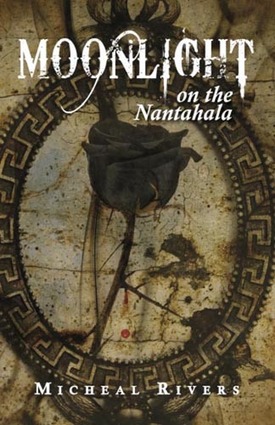 The lush forests surrounding the Nantahala River in North Carolina serve as the backdrop for this sweet and multifaceted tale. This book is many things. It is a ghost story, a romance, a tale of friendship, an examination of the ways in which we deal with adversity, a chronicle of how the world you know slowly disappears with the passage of time, and a celebration of the things that never change (and should never change). I loved the complexity of the character of Edward Caulfield. Sitting on the porch of his home, Edward is often swept away by whirlwinds of memories that take him back to happier times. He has many things to think about, and one of them is why he is the only one who cannot see the Lady of Nantahala; the specter of a woman waltzing alone over the dark waters of the river under the moonlight. Edward in his old age is assisted by his trusty house help Betty, who is quick with her wit and doesn’t think twice about speaking her mind. They have a relationship where both support each other, but Edward’s and Betty’s world is changed when Lena, a young woman with a troubled life, walks into their midst. There are other things I liked about the book such as the way the author presents the wisdom of both a people and a generation through the comments and thoughts of Edward, and the superb descriptions of the landscape both natural and man-made. The only thing I didn’t like was the villain who was a bit too perfect for my taste. But this detail did not detract from my overall enjoyment of the book. The heart and soul of the narrative is the interaction between Edward and Lena and how it affects each other, because ultimately Moonlight on the Nantahala is a story about finding the perfect rose, but you are going to have to read the book to figure that one out! *** If you like this blog you can have links to each week's posts delivered to your e-mail address. Please click here. |
I am a tinker, tailor, BlogrollLaura Novak
Barbara Alfaro Suzanne Rosenwasser Sunny Lockwood Christine Macdonald Jennie Rosenbaum Kristen Lamb Joe Konrath Sweepy Jean Ingrid Ricks The Jotter Robert David MacNeil Molly Greene The Passive Voice Third Sunday Blog Carnival Marilou George Laura Zera Jeri Walker-Bickett Lia London Categories
All
Archives
April 2020
|
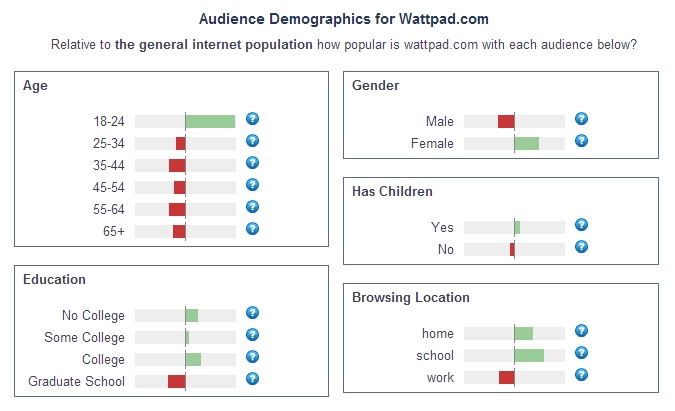
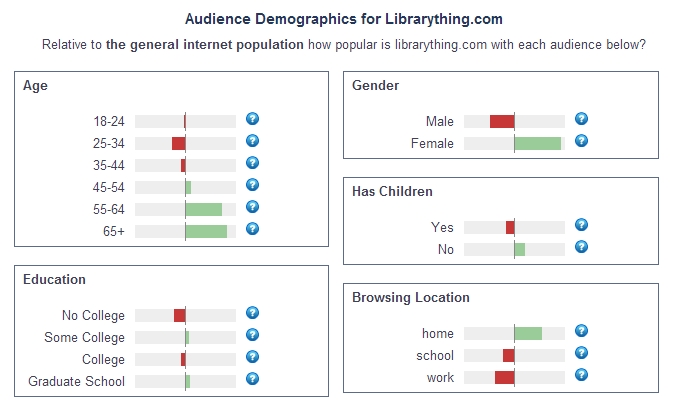


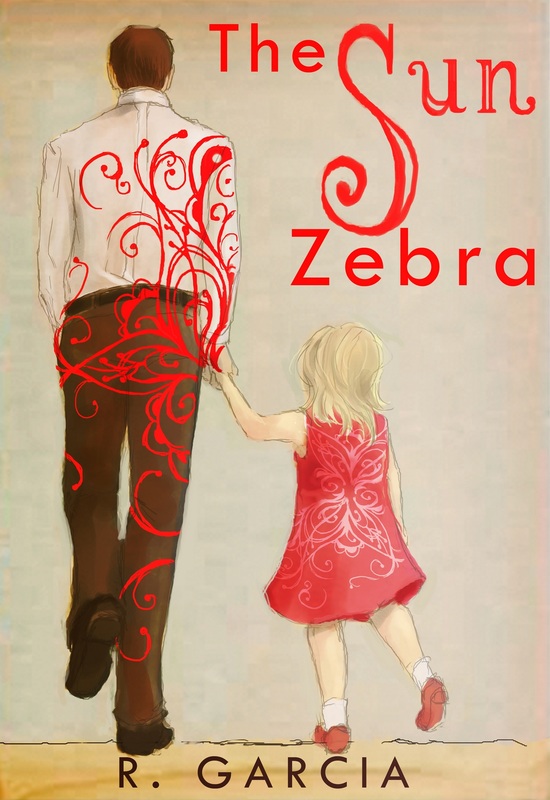

 RSS Feed
RSS Feed
